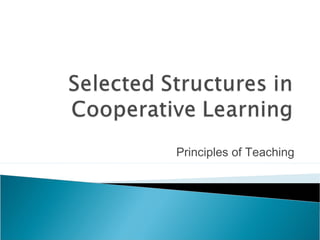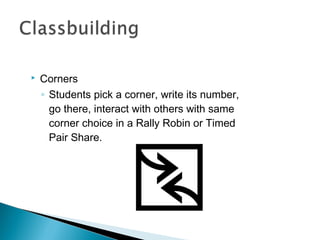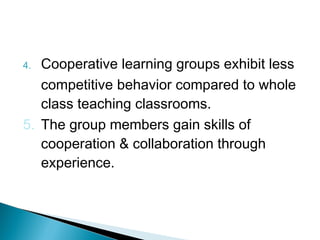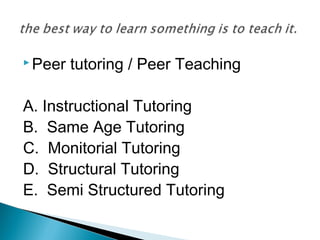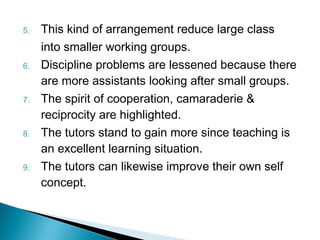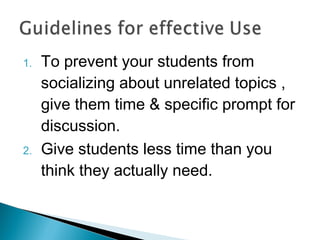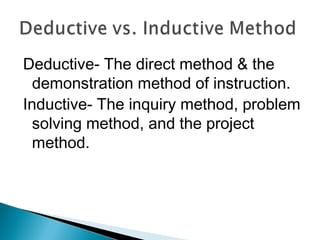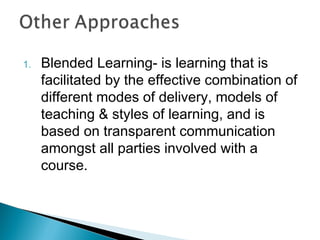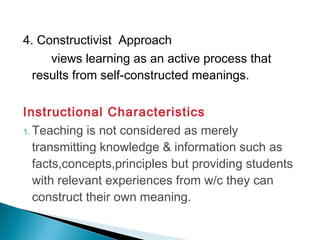1. The document discusses various cooperative learning strategies that can be used in the classroom to help students learn from each other in groups.
2. Some of the strategies described include think-pair-share, numbered heads together, and jigsaw problem solving where students work in teams to combine information.
3. Cooperative learning is said to develop skills like cooperation, increase idea generation, and exhibit less competitive behavior compared to traditional whole-class teaching. Using groups allows the teacher to work with other students simultaneously.
